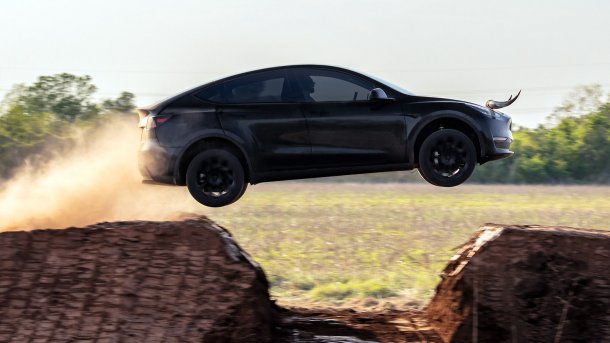Autonomous driving promised: Lawsuit against Tesla admitted
Tesla has been advertising for several years that autonomous driving is imminent. One buyer has sued the company and is seeking a class action lawsuit.

Tesla has raised hopes of autonomous driving for many years. No company can currently offer it.
(Bild: Tesla)
Tesla's promise of driving in which the car can handle most situations on its own under certain conditions is nothing new. Terms such as "autopilot" or "full self-driving" have in some cases raised expectations that have yet to be fulfilled. In the USA, a buyer of a Model S has filed a lawsuit against Tesla. He accuses the company of having advertised with false information about the ability of its models to drive autonomously. A class action lawsuit could increase the pressure on Tesla considerably, but no decision has yet been made on whether it will be approved.
Read more about autonomous driving
Autonomes Fahren: Wann uns das Auto das Fahren abnimmt
Promise was too optimistic
Among other things, the plaintiff refers to announcements made by Tesla in 2016 that new models would have the necessary technical equipment. He also refers to claims made by company boss Elon Musk, who promised at the time that a Tesla model would be able to drive from the west coast of the USA to the east coast by the end of 2017 without having to press a single button. Tesla has not been able to deliver this to date, and it is not foreseeable when this might be the case. Elon Musk later had to admit that he had often been too optimistic with his promises about self-driving cars.
Judge Rita Lin justified the admission of the lawsuit by stating that the plaintiff had plausibly and in detail shown that he had relied on these claims when purchasing a Tesla Model S in January 2017. He paid several thousand dollars extra for the future expansion stage of Tesla's "Autopilot" system, called "Full Self-Driving". However, even today, this does not turn a current model into an autonomously driving car. It is true that "Full Self-Driving" can now be tested by drivers in the USA as an advanced "Autopilot" version. However, it is still only an assistance system in which the person at the wheel is always responsible and must be ready to take control at any time. Tesla has now added the word "supervised" to the "FSD" name.
Tesla currently offers Level 2
Tesla models that are equipped accordingly currently offer semi-automated driving at Level 2. The company relies on a camera-based recognition system, while competitors such as Mercedes use more expensive lidar sensor technology. Only they have Level 3 approval in Europe, Tesla does not. The difference is considerable, both technically and legally. This is because with Level 3 there is a transfer of liability to the manufacturer: within a precisely defined framework, the car can drive autonomously in a scenario; in the event of an accident, the manufacturer is liable. However, the person at the wheel must be able to intervene within a few seconds and take over if the system reaches its limits. Only a level 4 system can always handle a(!) scenario on its own under defined conditions. This is currently not possible in a series-produced car.
More about the Tesla brand
Missing link: A Chinese ship is coming – even for autonomous driving?
Tesla Cybertruck stops off in Berlin: Visit to the e-monster
Tesla Cybertruck exhibited in Europe for the first time
Appeal against "supervised tweeting": Supreme Court rebuffs Elon Musk
Report: Green light for Tesla's driver assistance system in China
(mfz)